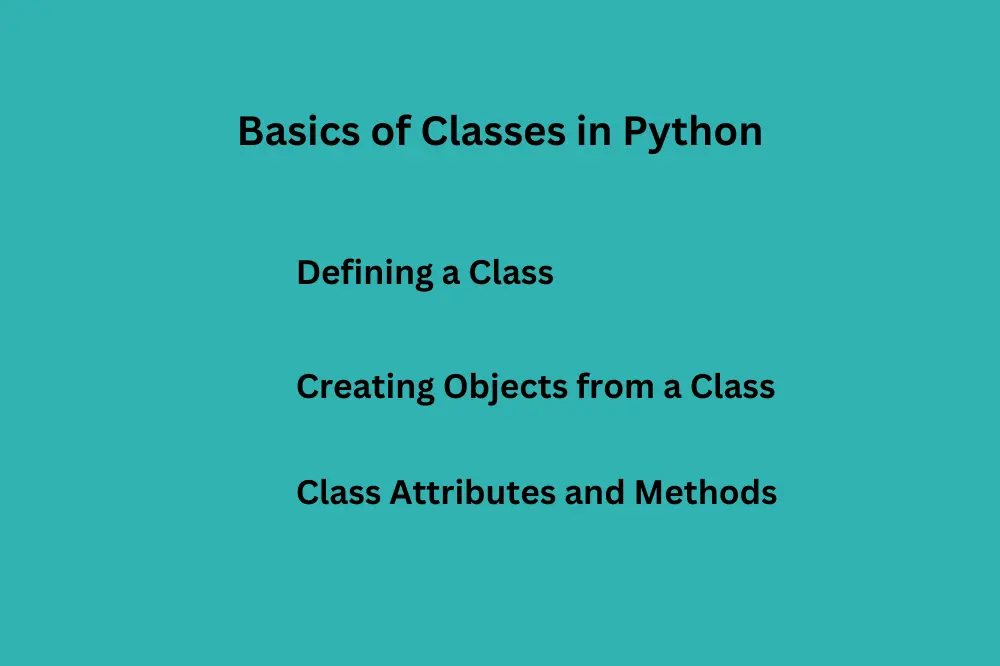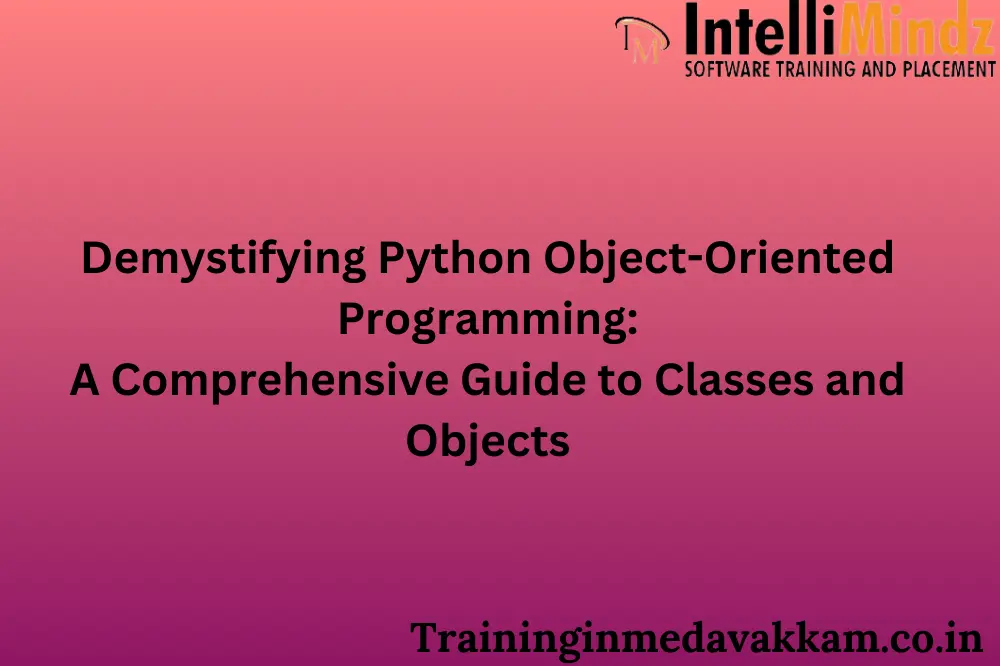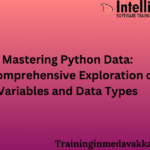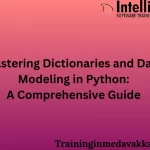Introduction
Brief Overview of Object-Oriented Programming (OOP)
Object-oriented programming is a programming paradigm that organizes code into reusable and structured units called objects. These objects encapsulate data and behavior, making it easier to model and manipulate complex systems. OOP principles include encapsulation, inheritance, and polymorphism, which contribute to building modular and maintainable code.
Importance of Classes and Objects in Python
In Python, a class is a blueprint or template for creating objects. Objects are instances of classes and serve as containers for data and functionality. The use of classes and objects in Python promotes code organization, reusability, and abstraction, enabling developers to model real-world entities in their programs effectively.

Basics of Classes in Python
Defining a Class
A class in Python is defined using the class keyword, providing a structure for creating objects. It encapsulates attributes (data) and methods (functions) that define the behavior of the objects.
Creating Objects from a Class
Once a class is defined, objects can be instantiated from it. These objects represent instances of the class and can be used to access its attributes and invoke its methods.
Class Attributes and Methods
Class attributes are variables that are shared among all instances of a class, while class methods are functions associated with the class rather than an instance. They are defined using the @classmethod decorator and have access to the class itself rather than instances.
Instance Variables and Methods
Understanding Instance Variables
Instance variables are unique to each object and store specific data for that instance. They are defined within methods and are accessed using the self keyword.
Defining and Using Instance Methods
Instance methods are functions associated with an instance of a class. They are defined using the def keyword within the class, taking self as the first parameter to access instance variables and other methods.
Self Keyword in Python Classes
The self keyword is a convention in Python used as the first parameter in method definitions within a class. It represents the instance of the class and allows access to its attributes and methods. It helps distinguish between instance variables and local variables within methods.
In conclusion, understanding the basics of classes, objects, instance variables, and methods in Python is crucial for effective object-oriented programming. These concepts provide a foundation for building modular, reusable, and organized code, contributing to the development of robust and maintainable software systems.
Inheritance
Creating a Subclass
Inheritance is a fundamental concept in OOP that allows a new class (subclass) to inherit attributes and methods from an existing class (superclass). In Python, a subclass is created by specifying the superclass in parentheses after the class name. This enables the subclass to reuse and extend the functionality of the superclass.
Overriding Methods in a Subclass
Subclasses have the flexibility to override methods inherited from the superclass. This means that the subclass can provide its own implementation for a method, tailoring it to specific requirements while maintaining the overall structure defined in the superclass.
Accessing Superclass Methods and Attributes
A subclass can access methods and attributes of the superclass using the super() keyword. This allows the subclass to invoke or override methods from the superclass, facilitating code reuse and promoting a hierarchical structure in the inheritance hierarchy.
Encapsulation
Private and Public Attributes
Encapsulation is the concept of bundling data (attributes) and methods that operate on that data within a single unit, typically a class. In Python, attributes can be designated as private by prefixing them with a double underscore (__). Private attributes are not directly accessible from outside the class, promoting data hiding and encapsulation.
Getter and Setter Methods
To control access to private attributes, getter and setter methods are often used. Getter methods provide read-only access to private attributes, while setter methods allow controlled modification of these attributes. This helps maintain data integrity and encapsulates the details of attribute manipulation within the class.
Encapsulation for Data Protection
Encapsulation ensures that the internal details of a class are hidden from the outside world. This protects the integrity of the data by controlling access and modification through well-defined interfaces (methods). Encapsulation promotes modular code design, making it easier to maintain and modify code without affecting other parts of the program.
Polymorphism
Method Overloading
Polymorphism allows a method to take different forms. In Python, method overloading is achieved by defining multiple methods with the same name in a class, differing in the number or types of parameters. The appropriate method is called based on the number and types of arguments provided.
Operator Overloading
Python supports operator overloading, allowing developers to define custom behavior for operators in their classes. This enables objects to respond to standard operators (+, -, *, /) based on the defined methods within the class.
Duck Typing in Python
Duck typing is a concept in Python where the type or class of an object is less important than the methods it defines. If an object walks like a duck and quacks like a duck, then it’s treated as a duck. This flexibility allows different classes to be used interchangeably based on their behavior rather than their explicit type, promoting a dynamic and versatile programming style in Python.
Class Variables
Shared Attributes Among All Instances
Class variables in Python are shared among all instances of a class. They are defined within the class but outside of any method. Class variables store data that is common to all instances, providing a way to share information across objects created from the same class.
Modifying Class Variables
Class variables can be modified the use of the magnificence name or any instance of the magnificence. When a class variable is modified the usage of an instance, it affects all instances of the magnificence. However, if modified the usage of the elegance call, the alternate is contemplated in all instances as properly. Modifying magnificence variables can be beneficial for retaining shared kingdom or configuration throughout a couple of times.
Special Methods (Magic or Dunder Methods)
Introduction to Special Methods
Special methods, additionally referred to as magic or dunder (double underscore) techniques, are prefixed and suffixed with double underscores. They offer a manner for classes to define behavior that is going past widespread attribute access and method calls. Special techniques are automatically invoked via Python in response to specific operations on gadgets.
Commonly Used Special Methods (e.G., __init__, __str__)
__init__: The __init__ method is referred to as while an item is instantiated. It is used for initializing the attributes of the item.
__str__: The __str__ approach is called through the str() integrated characteristic and the print() characteristic to acquire a human-readable string illustration of the object. This technique is often overridden to provide a custom string illustration.
Composition and Aggregation
Creating Classes Through Composition
Composition entails developing training via combining or "composing" multiple smaller instructions. Instead of the use of inheritance, in which a class inherits from another, composition allows for a extra flexible and modular design. Objects of one elegance are used as components inside some other elegance, taking into consideration more flexibility and less complicated protection.
Aggregating Objects in Python
Aggregation is a shape of composition in which one elegance incorporates every other as a element, however the contained magnificence remains an independent entity. Aggregation represents a "has-a" dating between training. This can result in a more modular and maintainable code shape, bearing in mind better reuse of present training and promoting a more intuitive and logical layout in Python programs.
Examples and Practical Applications
Modeling Real-World Scenarios with Classes and Objects
Using training and gadgets in Python allows the modeling of real-global scenarios in a based and intuitive manner. For example, a banking system ought to have classes representing debts, clients, and transactions. Objects of these lessons have interaction to simulate the conduct of an real banking system. This approach allows in creating code this is more representative of the problem domain, making it simpler to understand and maintain.
Building Modular and Reusable Code with OOP
Object-oriented programming promotes the advent of modular and reusable code. By encapsulating functionality within instructions, builders can construct unbiased units that may be without problems incorporated into larger systems. This modularity enhances code maintainability and permits for the efficient reuse of classes in different parts of a software or maybe in absolutely exclusive initiatives.
Challenges and Best Practices
Handling Challenges in Class Design
Challenges in class design may additionally consist of ensuring proper abstraction, averting excessive coupling between instructions, and handling the complexity of sophistication hierarchies. Care must be taken to strike a stability between granularity and brotherly love. Additionally, coping with dependencies, avoiding tight coupling, and designing for flexibility are vital demanding situations to deal with in the course of elegance design.
Best Practices for Writing Clean and Maintainable Code with Classes
To write easy and maintainable code with lessons, adhere to great practices including:
Following the Single Responsibility Principle (SRP): Each class ought to have a single obligation.
Embracing the Open/Closed Principle (OCP): Classes should be open for extension however closed for change.
Using significant names for training, techniques, and variables to enhance code clarity.
Documenting code with clean feedback and docstrings to facilitate understanding.
Favoring composition over inheritance for improved flexibility and maintainability.
Conducting thorough trying out to make certain the correctness of class behavior.
Consistently applying encapsulation to defend information and offer managed get admission to.
Conclusion
In conclusion, information and effectively applying item-orientated programming ideas in Python can substantially beautify code organization, readability, and maintainability. By modeling actual-global situations, building modular and reusable code, addressing challenges in magnificence design, and following pleasant practices, developers can create sturdy and scalable software systems. OOP in Python empowers programmers to tackle complex issues with a established and intuitive method, fostering the improvement of excellent and maintainable cod.



